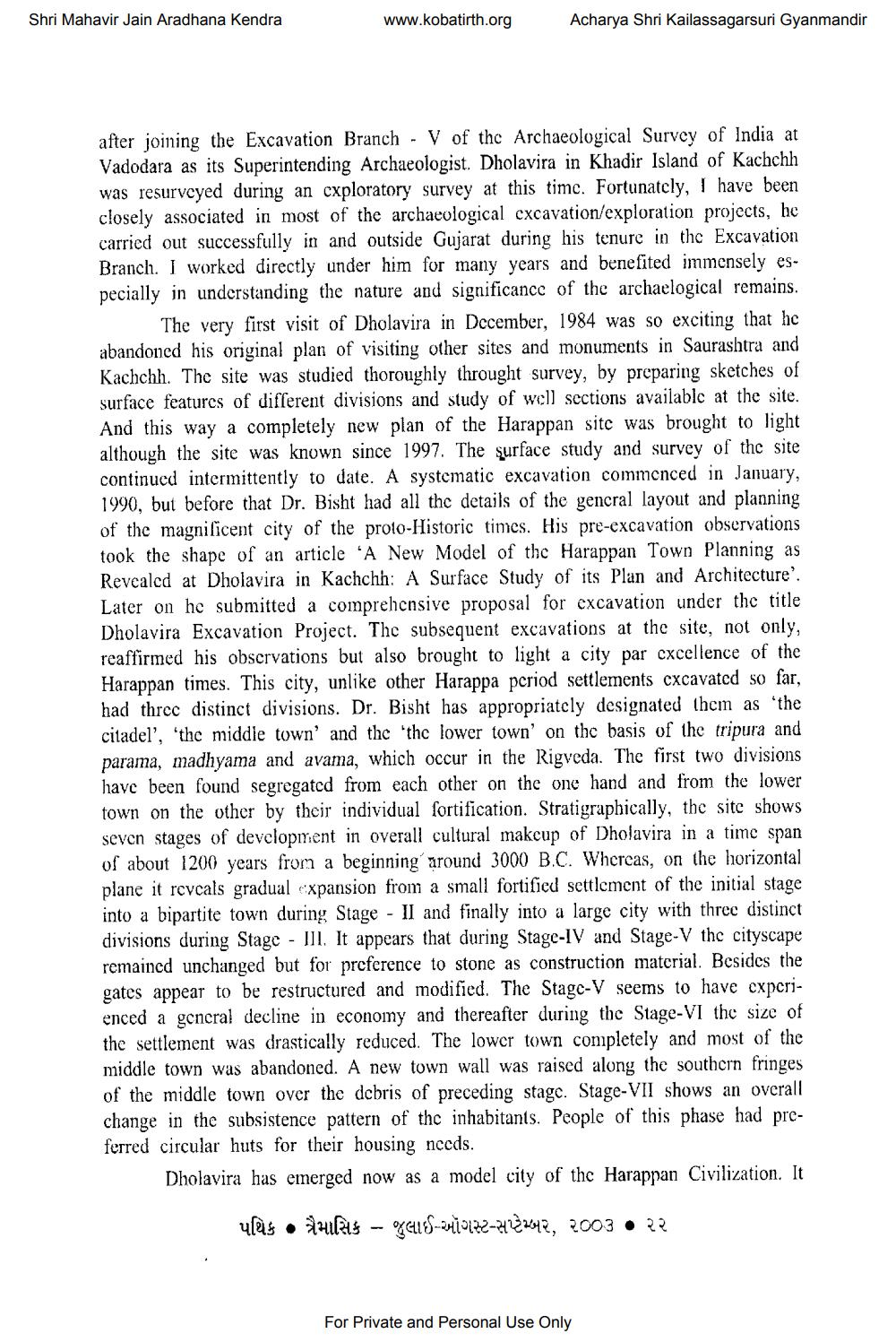________________
Shri Mahavir Jain Aradhana Kendra
www.kobatirth.org
Acharya Shri Kailassagarsuri Gyanmandir
after joining the Excavation Branch - V of the Archaeological Survey of India at Vadodara as its Superintending Archaeologist. Dholavira in Khadir Island of Kachchh was resurveyed during an exploratory survey at this time. Fortunately, I have been closely associated in most of the archaeological excavation/exploration projects, he carried out successfully in and outside Gujarat during his tenure in the Excavation Branch. I worked directly under him for many years and benefited immensely especially in understanding the nature and significance of the archaelogical remains.
The very first visit of Dholavira in December. 1984 was so exciting that he abandoned his original plan of visiting other sites and monuments in Saurashtra and Kachchh. The site was studied thoroughly throught survey, by preparing sketches of surface features of different divisions and study of well sections available at the site. And this way a completely new plan of the Harappan site was brought to light although the site was known since 1997. The surface study and survey of the site continued intermittently to date. A systematic excavation commenced in January, 1990, but before that Dr. Bisht had all the details of the general layout and planning of the magnificent city of the prolo-Historic times. His pre-excavation observations took the shape of an article 'A New Model of the Harappan Town Planning as Revealed at Dholavira in Kachchh: A Surface Study of its Plan and Architecture'. Later on he submitted a comprehensive proposal for excavation under the title Dholavira Excavation Project. The subsequent excavations at the site, not only, reaffirmed his observations but also brought to light a city par excellence of the Harappan times. This city, unlike other Harappa period settlements cxcavated so far, had three distinct divisions. Dr. Bisht has appropriatcly designated them as the citadel', 'the middle town' and the 'the lower town' on the basis of the tripura and parama, madhyama and avama, which occur in the Rigveda. The first two divisions have been found segregated from each other on the one hand and from the lower town on the other by their individual fortification. Stratigraphically, the site shows seven stages of development in overall cultural makeup of Dholavira in a time span of about 1200 years from a beginning around 3000 B.C. Whereas, on the horizontal plane it revcals gradual expansion from a small fortified settlement of the initial stage into a bipartite town during Stage - Il and finally into a large city with three distinct divisions during Stage - III. It appears that during Stage-IV and Stage-V the cityscape remained unchanged but for preference to stone as construction material. Besides the gates appear to be restructured and modified. The Stage-V seems to have experienced a general decline in economy and thereafter during the Stage-VI the size of the settlement was drastically reduced. The lower town completely and most of the middle town was abandoned. A new town wall was raised along the southern fringes of the middle town over the debris of preceding stage. Stage-VII shows an overall change in the subsistence pattern of the inhabitants. People of this phase had preferred circular huts for their housing needs.
Dholavira has emerged now as a model city of thc Harappan Civilization. It
ulas • SHS - OUD-2410122-72242, 2003 • 22
For Private and Personal Use Only




